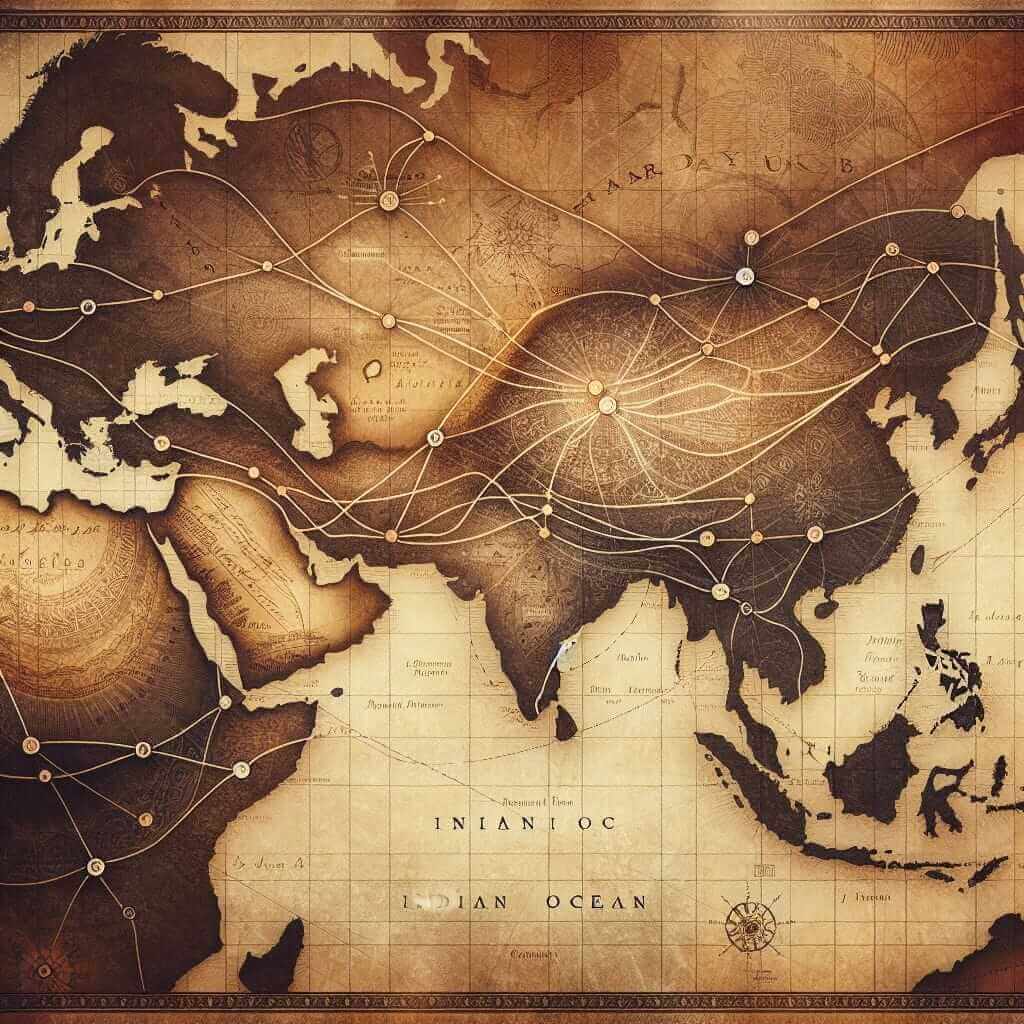The Reading section of the IELTS exam can be particularly challenging due to its demand for critical thinking and comprehension skills. A recurrent theme in IELTS Reading passages is the “Historical Analysis of Global Trade Networks,” a topic rich with historical context and economic implications. By understanding the historical analysis of global trade networks, students can better prepare for potential questions in the IELTS exam.
In this article, we’ll explore how global trade networks have evolved over the centuries and provide you with a comprehensive IELTS Reading practice test on this topic. This will help you grasp the nuances of the subject and sharpen your exam skills.
Historical Analysis of Global Trade Networks
What are Global Trade Networks?
Global trade networks refer to the interconnected systems of trade routes and commercial relationships that span across multiple countries and continents. Over the centuries, these networks have facilitated the exchange of goods, culture, and ideas, significantly impacting economic and social development.
Key Phases of Global Trade Development
- Ancient Trade Routes: The Silk Road and maritime routes in the Mediterranean and Indian Oceans.
- Colonial Trade: European colonial empires establishing trade networks in Africa, Asia, and the Americas.
- Industrial Revolution: The rise of industrial production and the expansion of global trade in the 19th century.
- Modern Globalization: Contemporary trade agreements and multinational corporations shaping trade policies.
IELTS Reading Practice Test
Passage: The Evolution of Global Trade Networks
In the practice passage below, we delve into the historical analysis of global trade networks from ancient times to the present.
Evolution of Global Trade Networks
Global trade has played a crucial role in shaping the economies and cultures of societies throughout history. From the ancient Silk Road to modern-day globalization, trade networks have evolved, impacting the global economy in profound ways.
Ancient Trade Networks
One of the earliest known trade routes was the Silk Road, which linked China with the Mediterranean world, including Europe and parts of North Africa. This network of trade routes allowed for the exchange of silk, spices, precious metals, and cultural practices. Another significant ancient trade route was the maritime network in the Indian Ocean, connecting Southeast Asia, India, the Arab world, and East Africa.

Colonial Trade Networks
During the Age of Exploration, European powers established extensive colonial empires and trade networks. These networks facilitated the exchange of goods such as tobacco, cotton, and sugar, often at the expense of colonized societies. The Atlantic Slave Trade was a dark chapter in this era, wherein millions of Africans were forcibly transported to the Americas.
Industrial Revolution
The Industrial Revolution in the 18th and 19th centuries marked a significant turning point in global trade. Industrial production led to the mass production of goods, making products more available and affordable. Steamships and railways revolutionized transportation, further integrating global trade networks.
Modern Globalization
In the 20th and 21st centuries, globalization has intensified with the advent of free trade agreements, multinational corporations, and advances in technology. Organizations such as the World Trade Organization (WTO) and economic blocs like the European Union (EU) have played crucial roles in shaping modern trade policies.
Questions
Multiple Choice
-
Which of the following was NOT a primary trade good on the Silk Road?
- A. Silk
- B. Spices
- C. Cotton
- D. Precious Metals
-
The Industrial Revolution primarily impacted global trade by:
- A. Decreasing the availability of goods
- B. Lowering the cost of transportation
- C. Introducing new trade routes
- D. Establishing colonial empires
Identifying Information (True/False/Not Given)
-
The Indian Ocean trade network only connected Asian countries. (True/False/Not Given)
-
The Atlantic Slave Trade was the most profitable trade network during the Age of Exploration. (True/False/Not Given)
Sentence Completion
- The Silk Road facilitated the exchange of ____ between China and the Mediterranean world.
Answer Key
-
C. Cotton
- Explanation: Cotton was more prominently traded during the colonial period, not on the Silk Road.
-
B. Lowering the cost of transportation
- Explanation: The Industrial Revolution introduced steamships and railways, making transportation more efficient and less costly.
-
False
- Explanation: The Indian Ocean trade network connected Southeast Asia, India, the Arab world, and East Africa, not just Asian countries.
-
Not Given
- Explanation: The passage does not compare the profitability of the Atlantic Slave Trade with other trade networks.
-
silk, spices, precious metals
- Explanation: These were among the primary goods exchanged along the Silk Road.
Common Mistakes to Avoid
- Skimming the Passage: Make sure to read the passage thoroughly to understand the context.
- Misinterpreting Questions: Carefully analyze what each question is asking.
- Ignoring Keywords: Pay attention to keywords in both the passage and the questions.
Vocabulary
Here are some of the challenging words in the passage:
- Interconnected (adj.): /ˌɪntərˈkɑːnɛktɪd/ – Mutually joined or related.
- Facilitate (v.): /fəˈsɪlɪˌteɪt/ – Make an action or process easy or easier.
- Maritime (adj.): /ˈmærɪˌtaɪm/ – Connected with the sea, especially in relation to seafaring commercial or military activity.
- Proliferation (n.): /prəˌlɪfəˈreɪʃən/ – Rapid increase in numbers.
Grammar Focus
Passive Voice
- Structure: [Subject] + [to be] + [past participle] (by [agent]).
- Usage: The Silk Road was connected by various smaller trade routes.
Relative Clauses
- Structure: [Relative pronoun] + [subject] + [verb] or [relative pronoun] + [verb].
- Example: The Silk Road, which linked China with the Mediterranean, was a crucial trade route.
Expert Advice
To excel in the IELTS Reading section:
- Practice Regularly: Consistency is key. Practice with various topics.
- Improve Vocabulary: Enhance your vocabulary to better understand complex passages.
- Time Management: Allocate your time wisely. Spend no more than 20 minutes per passage.
- Understand Question Types: Be familiar with different types of questions and strategies to tackle them.
By mastering the historical analysis of global trade networks and honing your reading skills, you’ll be well-prepared to achieve a high score in the IELTS Reading section. Good luck!